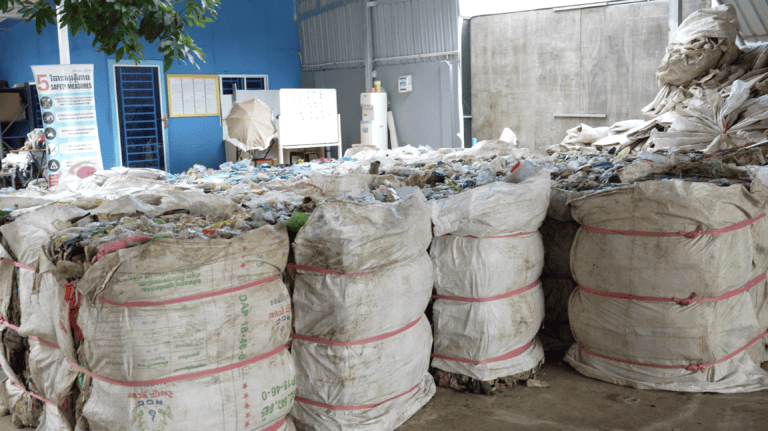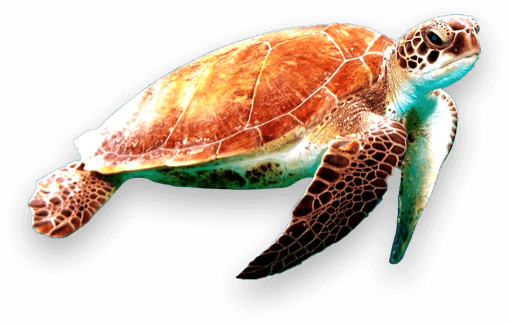Waste Exports - German Plastic Worldwide
Purchased, used, recycled – this cycle shapes our image of plastic. But the myth of Germany as the recycling world champion is crumbling. Neither complete recycling nor further processing in Germany correspond to reality.
Recycling: Numbers that deceive

Exporting instead of recycling
Obtaining accurate data on recycling rates is made even more difficult by the fact that Germany still likes to export some of the plastic waste it produces domestically. The perfidious thing about this is that when plastic waste from Germany is exported to certified recycling plants abroad, it is included in the calculation of German recycling rates. Current data for 2024 shows that Germany exported 732,000 tons in 2024 alone, which corresponds to over 10% of the plastic waste produced in Germany.5
This puts Germany in third place worldwide behind Japan and the USA as an exporter of waste6. The main receiving countries for German waste are in South East Asia and Eastern Europe (16% Malaysia, 14% Turkey, 12% Netherlands, 8% Indonesia, 8% Poland, 5% Vietnam)7. Waste exports are also very popular in the EU and worldwide – not long ago, China was the world’s waste hub, but China’s borders have been closed to waste exports since 2018. The sad successor is Malaysia, which has seen an extreme increase in waste imports.8
The routes of plastic waste to other countries are often opaque and the export data only refer to the official data; illegal transports cannot be recorded9.
Consequences of global waste exports
The waste business can be lucrative – after all, it’s all about raw materials. In Europe, the low price of new plastic and the expensive sorting and processing of used plastic has led to plastic being exported to countries in the Global South. However, precise evidence of the recycling infrastructure in the destination countries is usually inadequate: just 14% of the world’s plastic waste is recycled, 40% ends up in landfill sites, a further 14% in incineration plants and the remaining 32% finds its way into the environment, into bodies of water or is incinerated in an uncontrolled manner.10 The landfilled waste can be carried into our oceans via rivers, where it decomposes into microplastics and can be detected in the environment for centuries to come.
It is not only the path from landfill sites to rivers and oceans that has fatal consequences for the environment and people – serious effects can also be seen at the local landfill sites. As plastic is mixed with chemical additives such as plasticizers, flame retardants or dyes during production to improve its properties, these can leach out of the material and enter the water or air, as well as food.11 Greenpeace employees examined soil and water samples at five different locations in the Turkish province of Adana. A wide range of environmentally harmful and toxic chemicals were found at all locations, some in extremely high concentrations. Some of the chemicals detected can cause growth disorders in children, hormonal disorders, organ damage, cardiovascular diseases and various types of cancer.12

EU sets new limits
The legal regulations for waste exports are based on the “Basel Convention on the Control of Transboundary Movements of Hazardous Wastes and their Disposal”. It is the world’s first environmental agreement and came into force in 1992 – today 191 countries and the EU are parties to the convention. The Convention regulates the export of hazardous waste and obliges countries to ensure that this waste is treated and disposed of in an environmentally sound manner. The convention was tightened in 2021 and now also includes a requirement for consent from the exporting and importing countries for the transportation of hazardous or contaminated plastic waste.13
The Basel Convention only regulates the export of hazardous waste – there is no cross-border regulation for plastic waste in general. The EU therefore followed suit in 2024 and adopted an EU directive that is to be implemented from May 2027: according to this directive, waste, regardless of whether it is hazardous waste or not, can only be exported to countries outside the OECD (Organization for Economic Cooperation and Development) if the destination country explicitly agrees, meets the strict waste management standards and can prove that the waste is processed sustainably.14 In addition, exports of plastic waste to non-OECD countries are to be banned for two and a half years from November 202615. In addition to the export restrictions, the directive also provides for a stronger fight against the illegal waste trade16.
There are currently 38 countries organized in the OECD, including European countries and other industrialized countries such as the USA, Canada, Japan, Australia, New Zealand and Turkey17. The new EU directive therefore makes it more difficult to export waste to South East Asia – but Turkey and Eastern European countries remain open as major import countries, even though it has been proven that plastic waste is not fully recycled there, but ends up in landfills or is disposed of illegally.18
Turkey has already attempted to take corrective action itself and issued an import ban on certain plastic waste in 2021, such as mixed or mechanically sorted plastics, as these are difficult to recycle19. It remains to be seen to what extent country-specific import bans and the new EU directive can make a difference – the recent example of China shows that local bans do have an effect.
Impact from everwave
everwave takes responsibility for plastic waste in rivers and waters worldwide: together with companies, everwave has already collected 1.9 million kilograms of waste from rivers. With the help of AI, this waste is separated in locally installed zero-waste centers and prepared for further processing. everwave also faces specific challenges in each country. In Asia in particular, most of the waste collected consists of household and non-recyclable waste – this is fed locally into what is known as co-processing, where the waste is incinerated to produce electricity. This is currently the best solution for preventing waste from entering the environment a second time. Thanks to the Plastic Credits system, every company can take direct action and assume responsibility.
Sources
- https://www.destatis.de/DE/Presse/Pressemitteilungen/2024/12/PD24_475_321.html
- Plastic waste in Germany – NABU
- https://www.greenpeace.de/engagieren/nachhaltiger-leben/plastikmuellexporte-deutschland
- https://www.boell.de/sites/default/files/2022-01/Boell_Plastikatlas%202019%206.Auflage_V01_kommentierbar.pdf
- https://www.nabu.de/umwelt-und-ressourcen/abfall-und-recycling/26205.html
- https://de.statista.com/infografik/18340/die-groessten-plastikmuell-exporteure-der-welt/
- https://www.nabu.de/umwelt-und-ressourcen/abfall-und-recycling/26205.html
- https://de.statista.com/infografik/18340/die-groessten-plastikmuell-exporteure-der-welt/
- https://www.nabu.de/umwelt-und-ressourcen/abfall-und-recycling/26205.html
- https://www.boell.de/sites/default/files/2022-01/Boell_Plastikatlas%202019%206.Auflage_V01_kommentierbar.pdf
- https://www.boell.de/sites/default/files/2022-01/Boell_Plastikatlas%202019%206.Auflage_V01_kommentierbar.pdf
- https://www.greenpeace.de/engagieren/nachhaltiger-leben/plastikmuellexporte-deutschland
- https://eur-lex.europa.eu/DE/legal-content/summary/basel-convention-on-the-control-of-transboundary-movements-of-hazardous-wastes-and-their-disposal.html
- https://www.consilium.europa.eu/de/press/press-releases/2024/03/25/waste-shipments-council-signs-off-on-more-efficient-updated-rules/
- EU Commission : Stricter rules for EU waste exports come into force | ZEIT ONLINE
- https://www.consilium.europa.eu/de/press/press-releases/2024/03/25/waste-shipments-council-signs-off-on-more-efficient-updated-rules/
- Members and partners | OECD
- https://www.nabu.de/umwelt-und-ressourcen/abfall-und-recycling/26205.html
- https://www.greenpeace.de/engagieren/nachhaltiger-leben/plastikmuellexporte-deutschland


